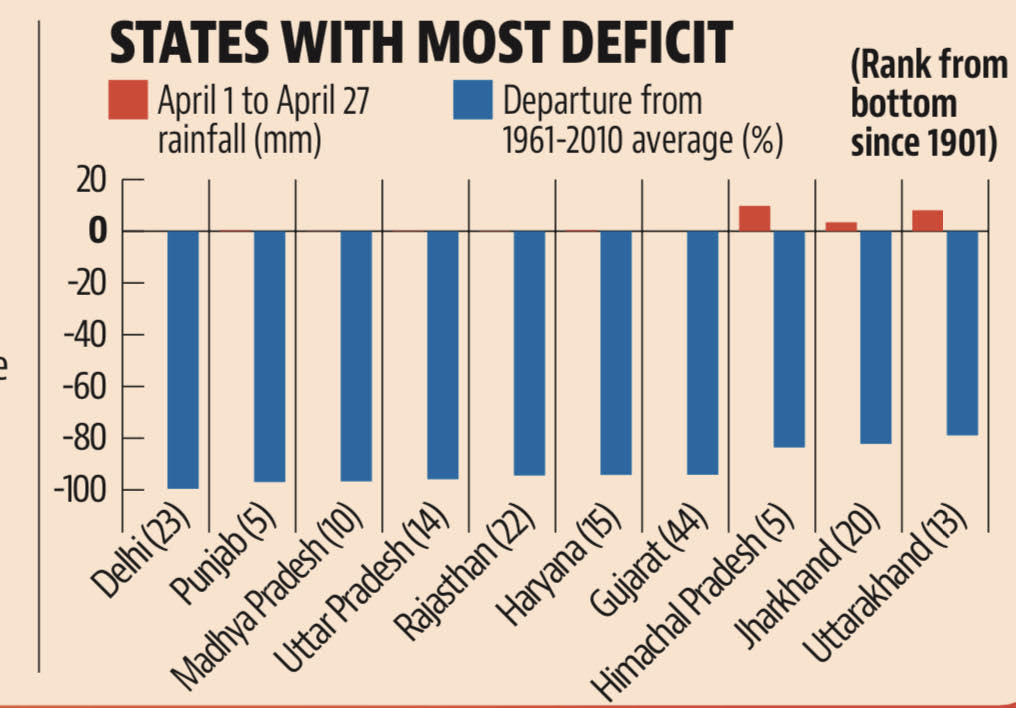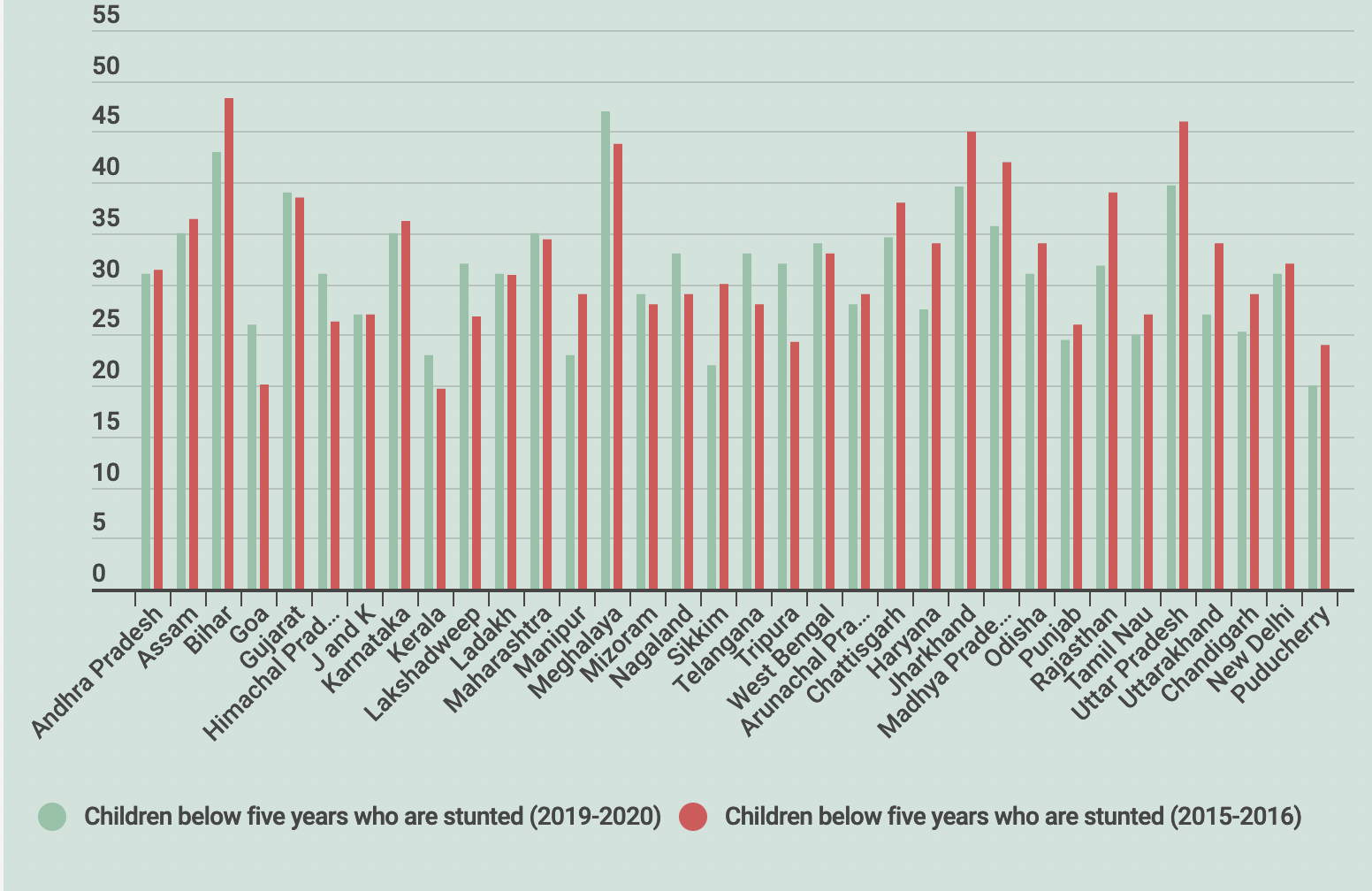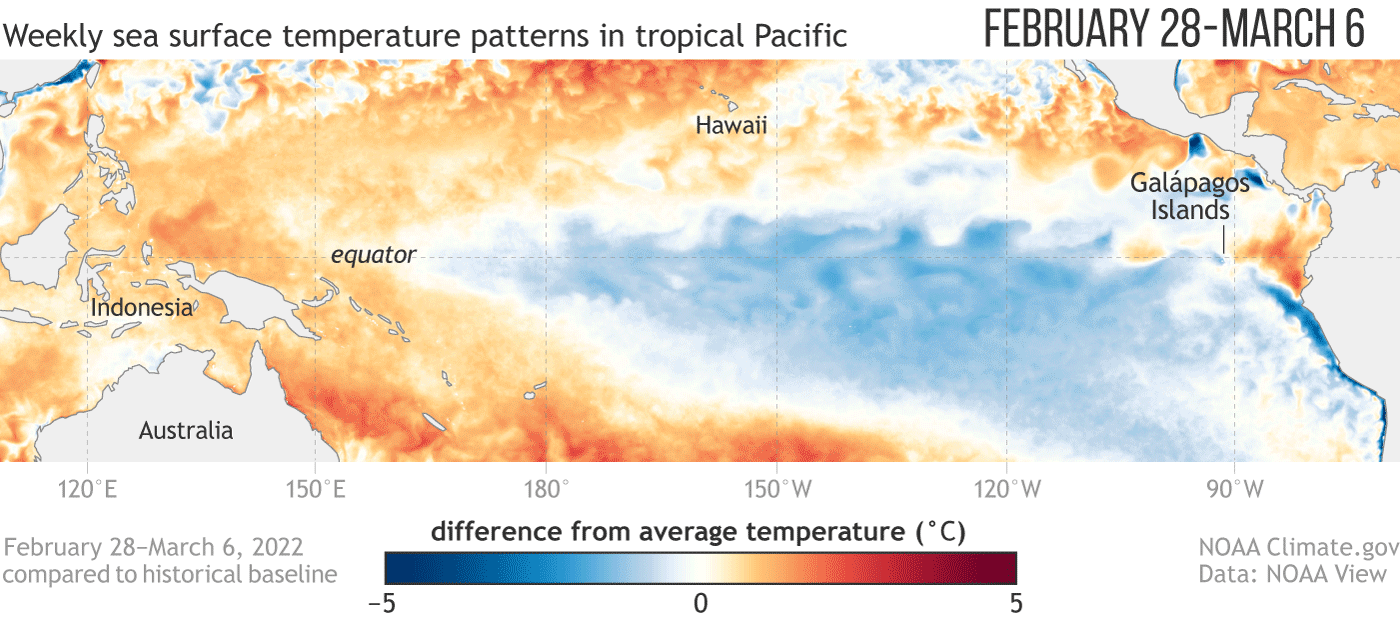Saving India from the Wrath of Heat Waves
Rising surface temperature is no longer a problem of the future

People in northwest and central India were in the grip of severe heat waves for the last few weeks. On April 29, several districts of Punjab recorded temperatures above 42 degrees with Patiala the hottest at 45.9 degrees while Haryana’s Sirsa district reached 46 degrees the same day.
In these states the rise in average temperature in April also broke the record of the previous 122 years as in March for the whole country. For people in New Delhi, April was the second hottest month in 72 years. The northwestern states recorded a daytime temperature 3.35 degrees above average and a nighttime temperature of 1.75 degrees above the long period average.

In the month of March, the temperature in cities like Dehradun and Dharamshala in the Western Himalayan region rose by an alarming 7 to 11 degrees. In the plains this warming has reduced the wheat crop yield by 450 kilos per acre on average, while the apple crop in the hills also saw a significant decline.
The proximate reason for the temperature rise in March was the non-receipt of rains caused by western disturbances. India received 89% and 83% less rainfall than average in March and April, and temperatures rose sharply due to the lack of humidity in the air.

The sixth Intergovernmental Panel on Climate Change report mentions in its second instalment the decline in crop yields due to rising temperature, especially in the context of India. According to the report, a 1 to 4°C rise in temperature can reduce paddy production by 10 to 30% and maize production by 25 to 70%. The strongest confirmation of this is the decline in wheat production in March this year.
If the temperature rises so fast then there may be a chronic shortage of food grains in our country. In addition, declining crop yields will reduce the income of farmers which will reduce their purchasing power and may also destabilize the economy of the country. Food shortages will push up food prices and keep food out of reach of the poor, leading to a further increase in undernourishment and an increase in starvation deaths in India.

India is not the only country suffering from rising temperatures. Incidents of temperature rise are being reported from different parts of the world. The Arctic and Antarctic poles also recorded warming in March this year. The Concordia Station in Antarctica recorded a low of -11.8°C this month, up from -40°C. The temperature near the North Pole on March 18 was 30°C higher than average.
From Dallas through Abilene to Del Rio in the state of Texas, USA, the temperature averaged 5 to 9°F above normal, making it the warmest December in more than 130 years. It was only last summer that the northwestern regions of Canada and the United States were scorched by heat waves. On June 29, the Canadian province of British Columbia recorded the highest temperature in the world at 49.6°C.
Surprisingly in the case of India, due to the weak La Niña oceanic cold current, the month of March became so hot that the spring after winter almost disappeared. During the La Niña phenomenon, the sea surface temperature in the eastern and central parts of the Pacific Ocean is colder than average, which makes the winter months in India colder and rainier than otherwise, but March this year was different. The opposite was true.

The onset of heatwaves in April also created a power crisis in many states as demand for electricity rose while many thermal plants do not have adequate coal reserves for power generation. Our country is still generating 75% of its electricity from coal. Coal releases more dangerous greenhouse gases into the atmosphere than any other source, raising the temperature locally and globally.
The Sixth IPCC report in its first instalment clearly shows that if greenhouse gas emissions and deforestation are not reduced rapidly, summers will be longer and winters shorter in the coming decades. Extreme temperatures will rise in many areas and the temperature will rise several degrees, leading to an increase in the incidence of heat waves among other hazards.
According to a study by the US Environmental Protection Agency, a 1°C rise in average global temperature can lead to a five fold jump in the incidence of heatwaves, and a 2°C rise is likely to increase it 14 times. By raising the temperature we will also multiply the incidence of droughts, and wildfires.

The rising temperature in India in April led to forest fires in the Dharamsala, Shimla, Mandi, and Solan districts of Himachal Pradesh. Due to the early onset of summer and prolonged absence of rains, 645 wildfires were reported in the month of April alone, resulting in 4,977 hectares of forest burning.
Most fires occur in areas where pine trees have been planted, because the dry needles and leaves and wood of pine trees are more flammable. In fact, the pine tree is not a local tree in the area. During earlier colonial rule, the British cut down vast numbers of oak and deodar trees here and replaced them with pine, as they grow faster than the local trees and are more commercially viable. Even then the locals had raised their voices against the British government for its pine and timber plantations, and its view of nature as a resource ignoring people’s lives.
The rising temperature with prolonged summer season and changing trends of heatwaves in India will cause rapid melting of glaciers in the Himalayas, which are already melting 10 times higher than average over the past few decades, according to a study by Leeds University. These vital freshwater sources are melting fast and their area has shrunk by 40% in these decades.
The source of all the rivers in northern India is in the snow-capped mountains of the Himalayas. There will be widespread loss of property and life. The death of crops will lead to further shortage of food. Later, due to lack of snow, the water level in the rivers will decrease which will lead to drought conditions. People will be forced to struggle with scarcity of water and food.
The rising temperature will also raise the sea level, increasing the risk of widespread displacement of people living in the coastal areas. The effects of warming will not be limited to the months of March and April and the hot and humid months of May and June. It will hit the lives of every Indian and the economy of the country as first the heat waves, then the drought, the forest fires, the melting of the Himalayan glaciers, the floods, the oceanic disasters, and the like will affect impoverished people. We too will face difficulties in meeting the basic necessities of life.
The Government of India should start taking seriously the promises made in the international conferences. Our country is still generating three-quarters of its electricity from coal, more than any other source of energy. Therefore, India should start generating electricity from wind and solar energy sources as soon as possible. Efforts should be made to generate solar power in particular as our country has huge reserves of solar energy.
The Kolahoi glacier in 1984 and 2016 / via Free Press Kashmir
In order to control the rising temperature, we should increase the forest cover and it should be at least 33% as mandated at the national and state levels. Only local trees should be planted in each area as the varieties of trees brought from other places cause various problems, such as eucalyptus trees from swamp areas that result in declining groundwater levels in the plains.
As the sixth IPCC report demonstrates, each country will also have to make necessary adjustments in the means of transport in order to deal with the rise in temperature. If left unchecked, carbon dioxide emissions from the transport sector alone could increase by up to 50% by 2050. Therefore, car-free infrastructure should be constructed, separate lanes should be constructed on the roads for pedestrians and cyclists. At the same time, in a densely peopled country like India, the public transport system should be made so efficient that people automatically start using public transport instead of private vehicles. As electricity is generated from renewables, instead of electrifying private vehicles, public transport should be electrified.
The Government of India should not rely solely on international initiatives. Our courts, governments and assemblies together with big businesses desperately need to make every effort countrywide.
The temperature in the mountainous regions of the country rising faster than other regions, and there is a documented growing risk of natural disasters, so any unnecessary construction in the name of economic development in the Himalayan states should be completely banned. In states like Uttarakhand and Himachal Pradesh, multipurpose projects or dams on rivers should be allowed only according to the scientifically determined carrying capacity of the rivers and hills. Roads and tunnels in mountainous areas should not be widened to such an extent that they impact the environment and people’s livelihoods and lives.
Similarly, protecting the natural resources of the Western Ghats is crucial to protecting the people of Deccan and south India from natural disasters. To that end, we must take the Gadgil Committee’s recommendations seriously. To protect the coastal areas of the country, mangroves, swamps, natural vegetation and wetlands must be grown, and construction regulations and Environmental Impact Assessments in the Coastal Regulation Zones must be strictly enforced by making them nature-friendly and people-friendly and not dilute them to make them corporate-friendly as was done most recently in 2018.
Rising surface temperature is no longer a problem of the future. We have been affected by this while the average temperature of Earth has risen only by 1.1 degrees. Now, we have no time to waste, just urgently need to make efforts at every level, from local to international, to save the planet and ourselves.
Dr Gurinder Kaur is Former Professor, Department of Geography, Punjabi University, Patiala




